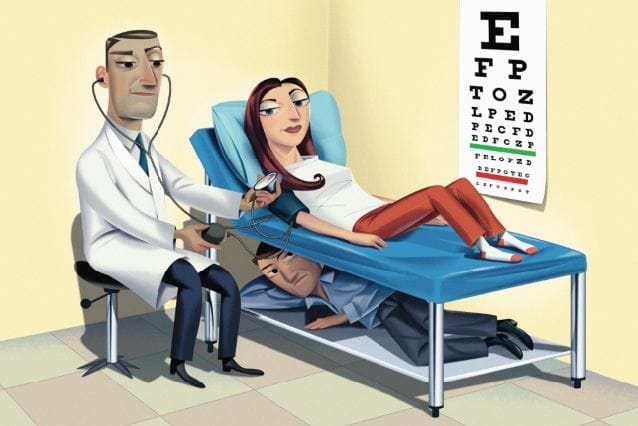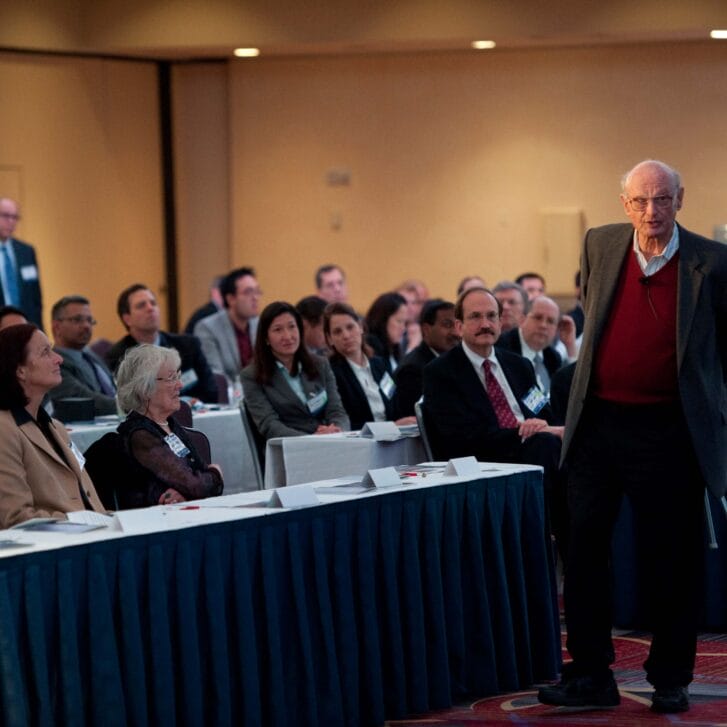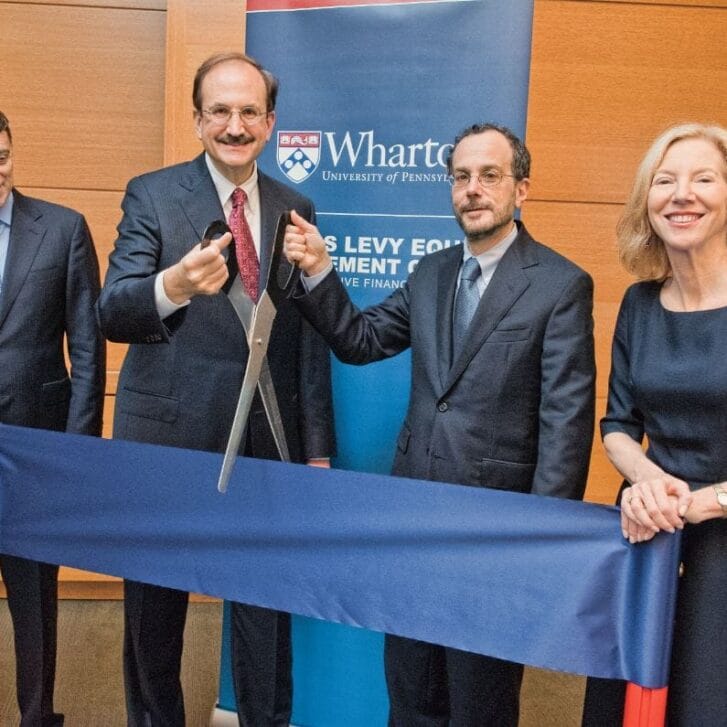For anyone who has ever waited days or weeks to see the doctor, concierge medicine sounds appealing: For an additional fee, patients typically enjoy same-day appointments and 24-hour access, more face time with the doctor and extra preventative care. Doctors who offer concierge medicine say the practice frees them from the constraints imposed by insurance providers and allows them time to give patients the individualized attention they need. Skeptics argue that concierge medicine promotes a two-tiered system, improving health care for a few but worsening it for everyone else.
“It’s an attempt to formalize two-class medicine,” says Wharton professor of health-care management Mark V. Pauly. “Those who can pay will get better treatment with a smile, and those who can’t will have to wait.”
Sometimes called boutique medicine, retainer-based medicine or direct care, concierge medicine is a small but growing practice. It started in Seattle in 1996, when Howard Maron, a former team doctor for the old Seattle Supersonics professional basketball team, left his traditional practice of about 3,000 patients and launched a program called MD2, providing exclusive medical care to about 50 families for a retainer. Today, concierge doctors in the United States serve almost a million patients, according to the American Academy of Private Physicians (AAPP), a national association of physicians who provide concierge medicine and fee-for-service health care. The Academy estimates there are about 3,500 concierge doctors nationwide, up from about 2,400 just 18 months ago. It expects the number to double every 12 to 18 months for the next three years.
Concierge medicine comes in many different forms, according to Tom Blue, the academy’s executive director. About 75 percent of concierge physicians hold on to their traditional practice, but take additional fees from a small number of patients who receive special perks, priority treatment and services not covered by traditional insurance. On the other end of the spectrum, doctors forgo relationships with Medicare, Medicaid and insurance carriers entirely, building their practice exclusively on patients willing to pay annual retainer fees for care. Depending upon the services, fees range from as little as $60 per year up to $30,000 per year. The majority of patients still carry health insurance to pay for specialized services that their concierge doctor is unable to provide.
For doctors, concierge medicine isn’t necessarily less work, but more satisfying work that allows them to build a more profitable practice. Unlike traditional doctors, a concierge physician builds up an income stream from patient contracts, much like the business of an insurance agent or retainer-based financial planner. That makes the practice potentially more profitable when it is finally sold. “Certainly, they are much more in control of their own destiny,” Blue says. “There’s actual equity in the practice and the patients.”
For patients, the much-touted benefit of concierge medicine is that the doctor has more time and can provide them greater access. Concierge doctors “have 80 percent to 90 percent fewer patients, so they can do other things that other physicians simply can’t,” Blue adds, such as house calls, email consultations, and more extensive exams and preventative tests that insurance won’t cover.
Prevention is concierge medicine’s most important benefit, according to Randy Baggesen, a concierge physician in Richmond, VA, who says he often catches disease in early stages because his practice focuses on cutting-edge preventative care. Baggesen charges $3,300 annually for his services, which on top of routine care also include tests such as a carotid intima-media thickness (CIMT) measurement, a type of ultrasound to detect plaque in artery walls. Sometimes described as a mammogram for the heart, the test is usually not covered by insurance if a patient is deemed low-risk, so most people don’t get it. The problem, according to Baggesen, is that using current national guidelines, 88 percent of heart attack victims would have been deemed low to moderate risk on the day before their heart attack, 75 percent of all victims have normal cholesterol, and 86 percent would have passed a stress test. “Heart attack and stroke should be a preventable issue,” he says. “We catch subclinical vascular disease all the time.”
Concierge medicine could grow as the country’s population ages and wealthy baby boomers demand more extensive care, notes Wharton health-care management professor Jonathan Kolstad. Physicians, constrained by mounting paperwork, may also find the concierge option increasingly appealing. A study published in Health Affairs in August 2011 found that the average physician in the United States spends $82,975 per year to process insurance claims, coverage and billing, and that a physician’s staff spends 20.6 hours per physician per week interacting with health plans.
“The amount of time spent coding and documenting purposes is quite staggering,” Kolstad says. The growth of concierge medicine reflects “both a demand and supply effect. As more people want this kind of access, physicians see it as a way to gain autonomy.”
“Off the Grid”
One of those physicians is Steven D. Knope, a concierge physician in Tucson, AZ, who runs a full-retainer practice that is “completely off the grid” of third-party payers such as Medicare, Medicaid and insurers. He charges an annual fee of $6,000 per individual or $10,000 per couple for full services.
He began his practice in 2000 after spending 10 years in a traditional practice and becoming increasingly frustrated with insurance companies. “When HMOs dominate the practice, for all intents and purposes, you work for them. They set the rates; they tell you what to order,” he says. “They owned 55 percent of my income stream. … It just really demoralized me.”
When a few of his patients approached him and suggested he shift to concierge medicine, “I said, ‘No, this sounds elitist. It sounds unethical.’” Over time, he changed his mind. “What was unethical was managing this third-party system of companies rationing care.”
Today, Knope sees 12 to 15 patients per day instead of 30 or 40, giving him time for pro-bono work with veterans and the elderly. His practice consists of about 300 patients—half of whom pay the fee, and half “who either pay nothing, or sometimes give me a chicken.” A few of his long-time patients, in their 90s or older, cannot afford the annual fee but insist on paying him $5 per visit. “There’s nothing unethical about taking care of the rich because all of us who do this take care of the poor as well,” he notes. “I have this amazing commodity called time.”
Knope believes concierge medicine holds part of the answer to the country’s growing shortage of primary-care physicians. “I think the only way you can make primary care attractive is to do some sort of fee-for-service medicine,” he states. “The bottom line is, people are not going to make an investment in medical school and their training to make a terrible living at it. … It’s logical to me that we go back to our roots and we act like any other professional—like a dentist, like a lawyer [and say,] ‘These are my rates; this is what I cost.’”
Arnold “Skip” Rosoff, a Wharton professor of legal studies and business ethics, disagrees. He says the spread of concierge medicine could numb people to the problems in the country’s health-care system. Patients who can afford concierge medicine and doctors who choose to offer it will naturally become less interested in finding a solution that benefits the country as a whole, he suggests. “It’s going to devolve into a two-class system of care. If we don’t address the fact that we don’t have primary-care physicians and all we do is put a Band-Aid on it for people who have concierge medicine … you have just shifted the problem.”
A “Gun to the Head” Model?
Concerns about concierge medicine have grown as it has spread. Some insurance companies have dropped concierge doctors, saying the model violates insurance contracts. Several states have questioned whether concierge medicine goes against their insurance laws. The Office of Inspector General of the U.S. Department of Health and Human Services has warned concierge doctors that charging Medicare patients “an ‘access fee’ or ‘administrative fee’ that simply allows them to obtain Medicare-covered services” could be considered double billing.
Pauly worries about what will happen if increasing numbers of doctors see concierge medicine as an alternative to taking Medicare patients. Medicare is in financial trouble and is reducing its payments to physicians, making Medicare patients less desirable. A survey by the American Medical Association of more than 9,000 physicians in May 2010 found that 17 percent were restricting the number of Medicare patients in their practice. Among the top reasons: 85 percent said Medicare payment rates were too low, and 78 percent said the ongoing threat of future payment cuts makes Medicare an unreliable payer.
“The great majority of doctors still take Medicare patients, but more are refusing to take new Medicare patients,” Pauly says. “If Medicare continues to tighten the screws on doctors … some will react by saying, ‘I’m just fed up with the whole thing.’” And if more doctors shift away from traditional practices to concierge medicine, it could exacerbate the physician shortage because there will be fewer doctors to go around, he adds. That could make it increasingly difficult for nonconcierge patients to find a physician.
The hybrid model of concierge medicine may offer a solution, says Wayne Lipton, founder of Concierge Choice Physicians. The private company, based in Rockville Centre, NY, helps physicians incorporate both concierge and traditional medicine under a single practice. Physicians usually keep about 2,000 patients but transition 75 to 100 patients into a concierge class that pays $150 to $200 per month extra for enhanced care. That is far less drastic than shifting an entire practice of 2,000 patients to the full concierge model, which accommodates about 350 patients on average.
Lipton calls the full-fledged concierge practice the “gun-to-the-head” model for patients, who must choose between having to pay the concierge fee and losing their doctor. “To me, that’s inherently troubling,” says Lipton. “If we were to promote that as a solution, it becomes a have and have-not environment.”
The hybrid model, Lipton notes, “rebalances the system.” Patients have the option to try out the concierge service without having to change doctors, and physicians are able to create a new revenue stream and ease into a less hectic practice without turning patients away. Patients also have a choice to stop paying for the concierge service if they can no longer afford it or decide they don’t want it anymore. “They’re not hooked in forever,” Lipton says. “They can go back to being a regular patient.”
Wharton health-care management professor Guy David is skeptical. While models that trim fees down to $100 or $200 per month may make concierge medicine affordable for the middle class (that’s less than what many people shell out every month for Starbucks coffee, he points out), it’s unclear how much better care a physician could offer concierge patients on top of a full practice. It’s simple mathematics, David says. “What can a physician who has a very full clinic do for those priority patients?” David speculates that becoming a concierge patient in a hybrid practice might be like moving to zone 2 from zone 5 on an airplane—rather than upgrading from coach to first class. “If the effect on the nonconcierge patient isn’t big, the effect on the concierge patient isn’t big.”
Another possible outcome: Nonconcierge patients in the practice might suffer. Sometimes when firms try to differentiate services, instead of making higher-priced service better, they simply make the lower-priced services worse.
David points out a classic case from 18th century France, when a train company ripped the roofs off its low-priced cars to encourage customers to buy more expensive tickets. Might concierge doctors begin to resent patients who don’t pay for the extra service and skimp on health care
as a result?
David wonders: “Once you have this class system in your practice, what’s going to stop [such] behavior?”
David emphasizes that concierge medicine is neither good nor bad, but a natural response to problems in the health-care system. He does not consider it a solution for the country.
“I don’t see concierge medicine being the new model for 300 million Americans,” he notes. Most people can’t afford to pay retainer fees on top of taxes and health insurance premiums.
“When you think about something that is sustainable at the national level, it’s very clear that concierge medicine will not work,” David says, returning to his airline analogy: “You can’t have everybody sit in zone two.”

























